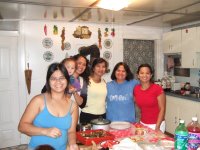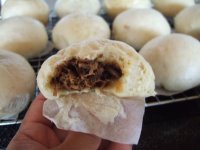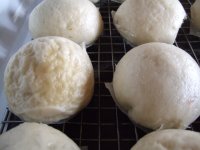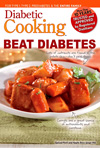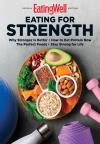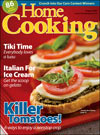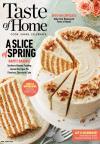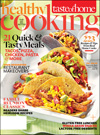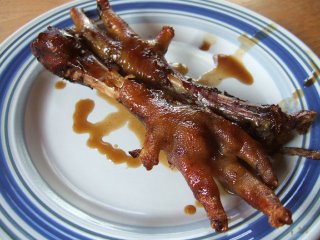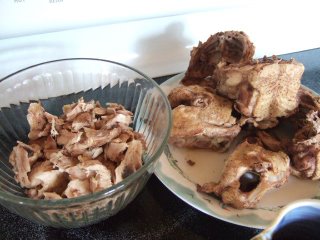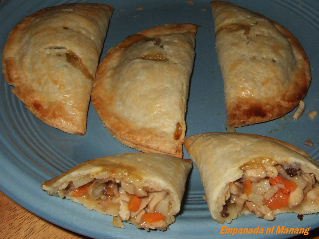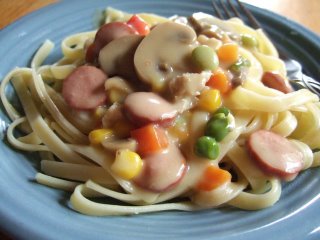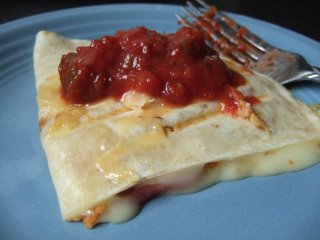 Panaderia (bakery), pan de sal (personal bread), pan de coco (bread with coconut), horno (oven), panadero (baker) -- these are all Spanish terms that we have incorporated into our Filipino language. Among the Spanish influences on Filipino foods, the yeast rolls have touched my life the greatest. (The influence on cooking, save for adobo, arroz caldo, and the usual guisado's, came at a much later time of my life, when I was already exposed to my classmates' and friends, and carinderia's dishes such as menudo, mechado, afritada, callos, caldereta, paella, etc.)
Panaderia (bakery), pan de sal (personal bread), pan de coco (bread with coconut), horno (oven), panadero (baker) -- these are all Spanish terms that we have incorporated into our Filipino language. Among the Spanish influences on Filipino foods, the yeast rolls have touched my life the greatest. (The influence on cooking, save for adobo, arroz caldo, and the usual guisado's, came at a much later time of my life, when I was already exposed to my classmates' and friends, and carinderia's dishes such as menudo, mechado, afritada, callos, caldereta, paella, etc.)My father started "working" in Metro Manila (having come from Cagayan in northern Philippines) as a tricycle driver during the day, and his sideline was to deliver hot pan de sal every morning to houses in the neighborhood in the town of Bagong Pagasa, Quezon City. The panaderia was situated near the church (Our Lady of Hope Parish) and had the old-fashioned brick oven, with a small hole that would only allow the panadero to maneuver his paddle in moving the pans inside. My father would observe then to learn about baking, and dreamed of putting up his own one day. With his income then just being a tricycle driver, he was able to buy one modern commercial oven (the metal kind) that would hold, if I remember it right, 16 baking pans at a time, and some basic baking tools. He was the panadero who prepared the dough, and the rest of the family helped in shaping the dough and laying them on the pans and arranging them on layered shelves for rising, then my father would bake them. I got so adept at shaping balls, that it was common for us siblings to have a contest as to who would make the smoothest one. Of course, my brother (oldest) was the best. And he was also the only child privileged with mastering the skill of shaping the ensaymada and Spanish bread.
 The demand for pan de sal was so great that time, that my father was able to raise some more money to buy additional equipment like a kneading machine with attachment for making breadcrumbs and a slicer to make "Tasty" [1] (equivalent of pan americano); get more ingredients; rent two units of an apartment 3 blocks away from where we actually lived; get another oven; hire more panaderos, and add some more items like pan de coco[5] and pandelimon[unnumbered in the pic] (the latter I am not sure whether it is of Spanish influence, but it is the equivalent of burger buns), then later Spanish bread[11], pudding (from old breads), pan de regla(?) [4](the one with red filling), pianono (this is a muffin batter baked like jelly rolls with sweet filling then sprinkled on top with sugar; one of my favorites), kababayan [6] (one type of muffins), our version of cheesecake [2] (which is actually ordinary muffin with grated cheddar cheese on top), ensaymada [7], monay [10] (very compact and delicious, this is made by kneading very well using the kneading machine; and the big sliced ones were also among my favorite, even plain), biscocho, patigas (a very compact white yeast roll with a crown brushed with eggwash and sprinkled with sugar), banana [9] (biscotti-shaped but nothing like it), hopiang baboy (which did not really contain any pork; just lots of onions sauteed in oil), and some other items which I cannot remember at this moment. My mother took some baking lessons to learn some special pan de sal recipe that contained more eggs, also to bake cakes such as custard cake and egg pie which are another favorites of mine. The problems was, she was not that interested, so that it was a short-lived endeavor on her part, and even if I ask her now, she cannot remember the recipes. She was more interested in sewing curtains and couch covers. (That is me on the picture when I was about age 16. The estante was all worn out by then, that's why it had those cracks. The part of the estante which had lots of space was waiting for some newly baked goods to be placed there. Notice that the pan holding the ensaymada was full; that means the ensaymada was newly baked and placed in the estante. Tip to those who like buying from the neighborhood bakery: choose the pans which are full, and point the ones you like. The store owners usually place the previous day's leftover, if any, on top of the newly baked ones.)
The demand for pan de sal was so great that time, that my father was able to raise some more money to buy additional equipment like a kneading machine with attachment for making breadcrumbs and a slicer to make "Tasty" [1] (equivalent of pan americano); get more ingredients; rent two units of an apartment 3 blocks away from where we actually lived; get another oven; hire more panaderos, and add some more items like pan de coco[5] and pandelimon[unnumbered in the pic] (the latter I am not sure whether it is of Spanish influence, but it is the equivalent of burger buns), then later Spanish bread[11], pudding (from old breads), pan de regla(?) [4](the one with red filling), pianono (this is a muffin batter baked like jelly rolls with sweet filling then sprinkled on top with sugar; one of my favorites), kababayan [6] (one type of muffins), our version of cheesecake [2] (which is actually ordinary muffin with grated cheddar cheese on top), ensaymada [7], monay [10] (very compact and delicious, this is made by kneading very well using the kneading machine; and the big sliced ones were also among my favorite, even plain), biscocho, patigas (a very compact white yeast roll with a crown brushed with eggwash and sprinkled with sugar), banana [9] (biscotti-shaped but nothing like it), hopiang baboy (which did not really contain any pork; just lots of onions sauteed in oil), and some other items which I cannot remember at this moment. My mother took some baking lessons to learn some special pan de sal recipe that contained more eggs, also to bake cakes such as custard cake and egg pie which are another favorites of mine. The problems was, she was not that interested, so that it was a short-lived endeavor on her part, and even if I ask her now, she cannot remember the recipes. She was more interested in sewing curtains and couch covers. (That is me on the picture when I was about age 16. The estante was all worn out by then, that's why it had those cracks. The part of the estante which had lots of space was waiting for some newly baked goods to be placed there. Notice that the pan holding the ensaymada was full; that means the ensaymada was newly baked and placed in the estante. Tip to those who like buying from the neighborhood bakery: choose the pans which are full, and point the ones you like. The store owners usually place the previous day's leftover, if any, on top of the newly baked ones.)Pan de sal making was started around 2:00 in the morning to make available to consumers as early as 4:30. All the non-yeast dough would be made during the morning from 7:00, then the other yeast doughs would follow. There would be a (smaller) second dough-making for pan de sal that would start at around 7 pm, to be available for those who like midnight snacks, and for packing in cellophane by the dozens for those families who want (cold but soft) pan de sal delivered to their houses early the next morning. (My father is an amicable person and had made friends with some tricycle passengers to whom he offered the delivery service. Thanks to the oven toaster, families could simply reheat the packed pan de sal, sometimes with their favorite cheese or mayonnaise on it.)
On making pan de sal, we had a mini-boat for mixing yeast doughs then, and our panaderos were so muscular (they could compete for bodybuilding contests) because of the extreme work-out of kneading the big doughs, as big as 4 pillows combined, which they would lay on top of a dining table (for 6) that was modified by adding a sheet of aluminum on top, and the dough would be covered with plastic, and later on would be doubled in size almost as wide as the whole surface of the table. Towards the end of this first rising, some small bubbles would form on the dough that we kids would playfully pop. Of course, my father would castigate us when doing so, afraid to disturb the yeast cells in doing their job and might end up giving us flat breads. Bad for business. While waiting, we would apply thin coat of vegetable lard (shortening) on the pans. The other panaderos would take care of cleaning the equipment or washing their laundry and their aprons (made of flour sacks). Some take the time to nap.
The busiest time of the day was around 3:00 in the afternoon. Come time for shaping the dough, we would gather at the sides of the table. My brother (or another panadero) would use a metal dough cutter to cut long portions from the big dough, then form these portions into a log, in the process creating the same effect as "punching" the dough down. The log formed would be compact and soft, then we would roll these on a pan of breadcrumbs, then lay side by side in wooden "pans" (rectangular flat crates about 4 feet long by 2 feet wide and 4 inches deep) and let them rise as we try to finish the rest. Once done with log-making, we would get the first batches, and my brother (or the panadero) would use the wooden dough cutter to cut the logs into 1 to 1-1/2 inches portions, throw these pieces our way on to a pan of breadcrumbs, and we smaller kids would roll these pieces to coat all sides with breadcrumbs, then lay on the flat baking pans diagonally as 6x4 (so 24 pieces per pan), carefully carry the pan toward the shelf and let it rest there for at least 30 minutes (actually while working on the rest of the dough) before baking. (I tried to copy this method now that I am here in the US; see this page for step-by-step photos, using a bread machine recipe for the dough. I blogged about it in my old kusina with a poem inspired by the smell of the dough as it was rising inside the bread machine.) One of the reasons why pan de sal are so spongy is the time of rising. When you make and bake more, the longer the last batches have for rising, and the more airy it becomes. If it sits too long before entering the oven, the result is a somewhat dry, airy, sponge-like bread. So the best batches would be the first 3/4. It is not because the panaderos want to make it appear bigger to justify the cost, for the information of those of you who look at it that way. They usually weigh the first cut portion then approximate the rest by comparing sizes as they proceed with cutting, checking along the way if they are still maintaining the right weight. These panaderos are so skilled that they usually do not need to weigh at all.
I loved the hustle during the early morning hours when neighbors would troop to buy our freshly baked pan de sal, usually with Dari Creme or (my favorite) Reno liver spread. During school days, I would usually have these for my breakfast, especially when we had no maids. I particularly enjoyed the early mornings during misa de gallo, because then more people would make that trip to buy hot pan de sal, and usually at an earlier time of 4:00 in the morning.
Our bakery plus store was a good income source for us, and while we were not rich, we were not deprived; we lived comfortably...until SM city was built, and Goldilocks was there, plus some more baked goods in the grocery shelves, then the SuperSale was born, not to mention the sudden abundance of other neighborhood bakeries. We strived to keep our bakery going. It is rather the same with Wal-Mart versus small town stores. My brother later got a job as a baker in a Japanese-owned outlet in MegaMall, and the rest of us were already in college, so my father was left struggling to keep the bakery going. I sold some baked goods in my Medicine days by using hotdogs as fillings for the Spanish bread dough, Argentina corned beef with onions instead of coconut for pan de coco dough, and also by making chicken and ham sandwiches.
The competition was so great, that my father would often have lots of returned old breads, usually already moldy and not fit for making bread pudding. He resorted to using potassium bromate for what he thought not only prolonged the shelf life but also improved the texture and the taste (cheese-like), but it was later banned because it was found to be carcinogenic (read more here). So even before I left PI, our bakery had stopped operating. It was a sad and gradual event for us, which affected my father greatly. I often would see him lying on the bed, staring at the ceiling, and would sometimes voice regret that my brother did not support him in continuing the business...I felt that part of the problem could be blamed in not teaching us GIRLS to do at least small scale baking (my brother learned all the recipes down to baking per se; we girls only helped shape the dough and place them on pans), but then we had no small oven (which was not uncommon for the typical Filipino family). And I thought then that the heavy workload and the huge machineries and ovens were meant for men. Ironically, when I recently talked to my younger son about how I plan to teach them how to make yeast rolls, he said, "But that's for girls!" My quick reply was, "Annnoooo? Hindi ah!" (What? Of course not!) And I told him the above story, then thought of posting about it here as my entry for the LP 14.
Now that I am here in the US, I am trying to copy those goodies (especially the yeast rolls) and come up with my own baked goods using non-commercial (aka homemade) recipes and ingredients for family consumption (as in, I avoid leftovers) -- e.g., butter instead of margarine or shortening, real pork lard whenever I can have it instead of shortening, lots of eggs depending on the recipe, milk instead of water (also depending on the recipe), buttermilk, sour dough, potatoes and other new ingredients, and NO PRESERVATIVES (I do not let them go beyond 3 days as that would be inviting molds. For those of you who like buying breads from the grocery stores because "they last longer," think again...). While I seldom bother to ask for the recipes my father and brother had for those rolls and buns I grew up with, I do experiment with different recipes online and from books/co-foodbloggers and choose which ones I will use to make my version of pan de sal, pan de coco, ensaymada, etc., and modify accordingly, then I post them here in my foodblog as I learn, in an attempt to chronicle for my children's sake, and to share with other Filipina expats who may be interested. And as my own addition to the usual yeast rolls I had as a child, I am adding to my collection my own versions of other breads/rolls that I had in PI such the siopao, chicken or beef filled bread like beef asado roll (the pocket version of which I used to buy in Goldilocks for heavy merienda back in those times).
I am thankful to the Spaniards for introducing to the Filipino community (I presume it was their legacy to us) the PANADERIA.
Entry to Lasang Pinoy 14 hosted by purplegirl.

